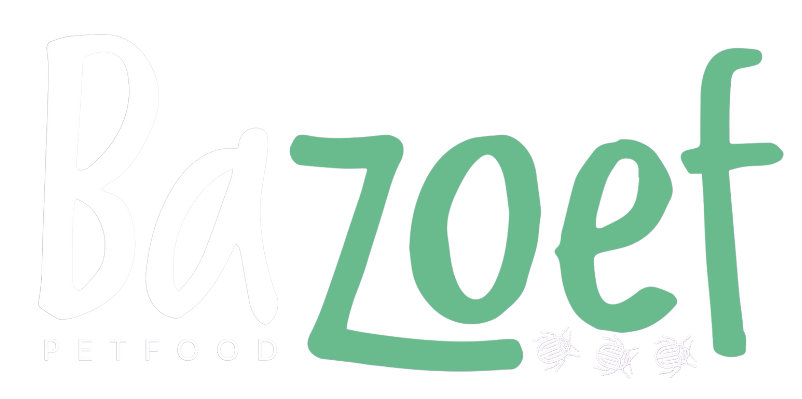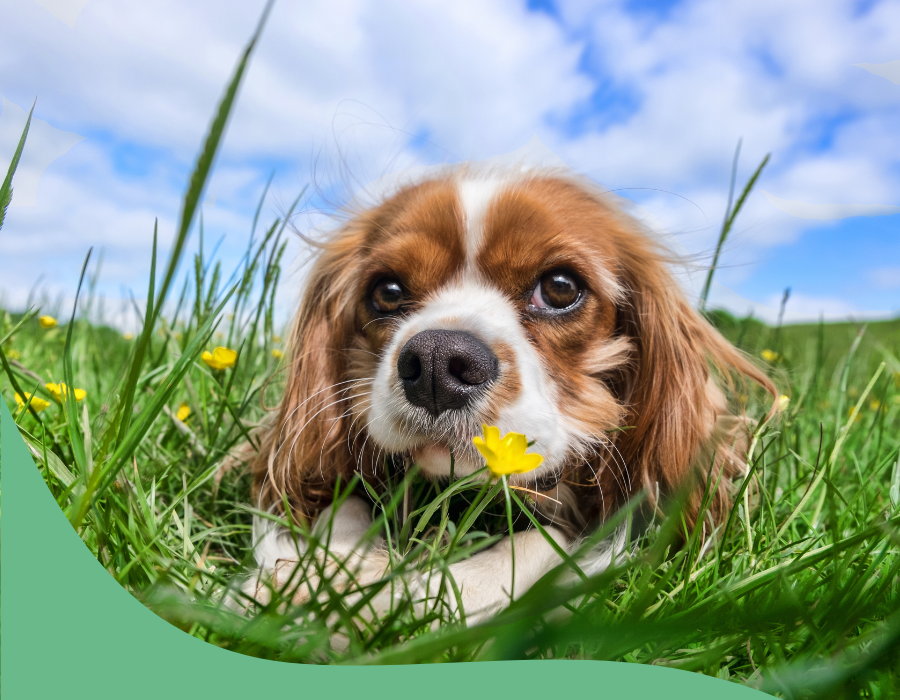- 1. General Profile of the Cavalier King Charles
- 2. Health
- 3. Diet
- 4. Overview of the Cavalier King Charles’ Nutritional Needs
- 5. Do Cavalier King Charles Spaniels Have Health Problems?
- 6. What Is the Life Expectancy of a Cavalier King Charles?
- 7. Coat, Grooming, and Hygiene Tips for the Cavalier King Charles
- 8. Hygiene
- 9. Exercise Tips for the Cavalier King Charles
- 10. Training Tips for the Cavalier King Charles
- 11. Conclusion

Who hasn’t seen a Cavalier King Charles wagging its tail with delight?
Affectionate and playful, these charmers have everything it takes to win hearts.
Thinking about welcoming a Cavalier King Charles into your family?
Here’s a complete guide to this breed: an overview with key training and health tips to help you care for your current—or future—companion!
General Profile of the Cavalier King Charles
Personality
The Cavalier King Charles is a little dog with a big heart, known for its gentleness, sociability, and cheerful temperament.
Deeply affectionate, it loves human company and generally gets along well with children, other dogs, and even cats.
Intelligent and easy to train, it makes an excellent companion dog—just as comfortable in an apartment as it is in the countryside.
Size and Weight
The Cavalier King Charles usually measures between 30 and 33 cm at the shoulder. Its weight typically falls between 6 and 8 kg.
It’s important to keep a close eye on its weight to prevent health problems, especially joint and heart issues.
If you’ve never seen a Cavalier King Charles in person, the infographic below shows its size compared to other dog breeds.

Health
Although the Cavalier King Charles is a sturdy little dog, it can be prone to certain hereditary conditions, such as heart problems (especially mitral valve disease) and neurological disorders like syringomyelia.
A balanced diet, regular veterinary check-ups, and careful weight management are key to maintaining its health.
Because this breed is very attached to its humans, prolonged loneliness can cause stress, which in turn may affect its overall well-being.
A life filled with love, play, and proper care will keep your Cavalier King Charles thriving for years to come!
Diet
Now let’s take a closer look at the Cavalier King Charles’ nutritional needs.
Its diet should be balanced, easily digestible, and tailored to its size and activity level. This little dog has a big appetite, so it’s important to watch for weight gain!

Overview of the Cavalier King Charles’ Nutritional Needs
| Nutrient | Role | Recommended Sources |
| High-quality proteins | Energy and muscle maintenance | Insect protein, meat, fish, legumes |
| Digestible carbohydrates | Secondary energy source | Rice, sweet potato, vegetables |
| Healthy fats | Shiny coat, healthy skin | Fish oil, rapeseed oil |
| Fibers | Good digestion | Vegetables |
| Vitamins & minerals | Immunity and vitality | Balanced supplements, fresh produce |
Practical Feeding Tips
| Tip | Why It Matters | Guidance |
| Meal frequency | Supports digestion and energy balance | 2 meals per day for adults, 3–4 for puppies |
| Weight monitoring | Prevents obesity, common in the breed | Regularly check body condition |
| Avoid table scraps | Protects from excess salt, sugar, or fat | Stick to dog-safe food only |
| Healthy treats | Encourages training without weight gain | Offer in moderation, choose natural options |
For Cavaliers with sensitivities, a hypoallergenic diet or one based on alternative protein sources (such as insect protein) can improve digestion and help reduce itching. Always consult your veterinarian if you’re unsure!

Do Cavalier King Charles Spaniels Have Health Problems?
Like all dogs (and pets in general!), the Cavalier King Charles can be prone to certain health issues, particularly involving its joints, eyes, and heart.
But don’t worry: with a healthy diet, regular exercise, and consistent veterinary check-ups, many risks can be reduced or anticipated.
Let’s take a closer look at the three main health problems Cavalier King Charles Spaniels may face.
1. Joint Problems
Although less common than heart conditions, joint issues can still affect Cavaliers. The most frequent include:
| Condition | What It Is | Impact |
| Patellar luxation | The kneecap slips out of place | Causes limping or discomfort |
| Hip dysplasia | Less frequent but possible | More likely with obesity or genetic predisposition |
| Arthritis | Appears with age | Especially if earlier joint issues were untreated |
Prevention tip: A balanced diet, stable weight, and moderate but regular physical activity are key to maintaining healthy joints.
2. Eye Problems
Cavalier King Charles Spaniels are prone to several hereditary eye conditions. The most common are:
| Condition | What It Is | Impact |
| Dry eye (keratoconjunctivitis sicca) | Inadequate tear production | Irritation, redness, infections if untreated |
| Cataracts | Clouding of the lens, often age-related | Gradual loss of vision |
| Retinal dysplasia | Congenital malformation of the retina | Can impair vision, sometimes from a young age |
Prevention tip: Routine vet visits—and occasionally an eye specialist check-up—help detect and treat these issues early.
3. Heart Problems
Sadly, Cavaliers are predisposed to heart disease, most notably mitral valve disease (MVD), which is very common in the breed.
MVD is a degenerative condition of the mitral valve, leading to improper blood flow in the heart.
Symptoms to watch for:
- Persistent cough, especially at night or after exercise
- Unusual fatigue
- Shortness of breath
- Loss of appetite or weight
Prevention tip: Regular veterinary check-ups, including heart auscultation from age 2–3, can catch early signs. With timely diagnosis, appropriate medication can slow the disease’s progression and maintain quality of life.
What Is the Life Expectancy of a Cavalier King Charles?
The Cavalier King Charles has an average lifespan of 10 to 14 years.
Some individuals live even longer, especially when given a healthy lifestyle, high-quality nutrition, and regular veterinary care.
Coat, Grooming, and Hygiene Tips for the Cavalier King Charles
Coat
The Cavalier King Charles has a silky, medium-to-long coat that is slightly wavy but not curly.
It does not require any special trimming, as its natural elegance is part of the breed’s charm. Graceful feathering develops on the ears, legs, chest, and tail, giving it a princely appearance.



The 4 Official Coat Colors
- Blenheim: White with rich chestnut markings
- Tricolor: Black, white, and tan
- Ruby: Solid deep red
- Black & Tan: Black with clearly defined tan markings
Grooming
Gentle brushing 2 to 3 times per week is enough to prevent tangles, especially on the feathered areas.
The breed sheds moderately, with heavier shedding in spring and fall. A bath every 1 to 2 months will keep the coat clean and shiny without stripping it too much.

Hygiene
Proper hygiene is essential for the overall health of the Cavalier King Charles, with two areas requiring special attention: teeth and nails.
Teeth
Small dogs, including the Cavalier, are more prone to tartar buildup and periodontal disease. Poor dental care can cause bad breath, pain, infections, and even long-term heart problems.
Ideally, brush the dog’s teeth 2 to 3 times per week with a canine-safe toothpaste. Natural dental chews or chew toys can also help reduce tartar buildup.
Nails
Overgrown nails can make walking uncomfortable and cause pain, or even lead to pad and joint deformities.
Check and trim the nails every 3 to 4 weeks, especially if the dog doesn’t naturally wear them down (for example, when living mostly indoors or walking little on hard surfaces).
Tip: Introduce these care routines early on as part of a cozy bonding moment, so the dog sees them as positive rather than stressful.
Exercise Tips for the Cavalier King Charles
Despite their reputation as lapdogs, Cavaliers enjoy daily activity to stay fit and healthy.
They need 30 to 45 minutes of exercise per day, including gentle walks, interactive play, and safe off-leash time.
For puppies, limit exercise to five minutes per month of age to protect their developing joints.

Training Tips for the Cavalier King Charles
Like all dogs, training a Cavalier King Charles takes time and patience. Here are 5 key tips to guide you in the right approach!
1. Start Early
If you’ve adopted a Cavalier puppy, begin training right away!
From the moment it arrives home, you can work on basics such as house training, recall, and sit. At this age, Cavaliers absorb everything like sponges.
If you’ve adopted an adult Cavalier, don’t worry—it’s never too late. Training is possible at any age, though breaking old habits may take a bit more patience.
2. Use Positive Reinforcement
Rewards, treats, petting, and a cheerful voice are your best allies.
The Cavalier is sensitive and does not tolerate harsh methods. Often, an enthusiastic “Good job!” is just as effective as a treat.
3. Keep It Short and Fun
Sessions of 5 to 10 minutes are enough, repeated several times a day. Vary the exercises to keep its focus.
Also practice in different environments—indoors and outdoors—so your Cavalier learns that the rules apply everywhere. For example, practicing calm behavior around other dogs may be easier in your usual park.
4. Early Socialization
Expose your Cavalier King Charles to different people, animals, sounds, and environments from a young age.
A well-socialized Cavalier grows into a well-balanced and confident dog.
5. Patience and Consistency
The golden rule: repeat commands calmly and consistently. Remember, Cavaliers are sensitive!
Always use the same words for commands and stay consistent with the rules (for example: is the sofa allowed or not?).

Conclusion
We hope this guide helps you build a strong and happy bond with your Cavalier King Charles.
This little dog with a big heart can be a wonderful companion for you and your family, whether you live in an apartment or in the countryside.
It will give you endless affection—we hope you’ll be ready to give just as much back!



